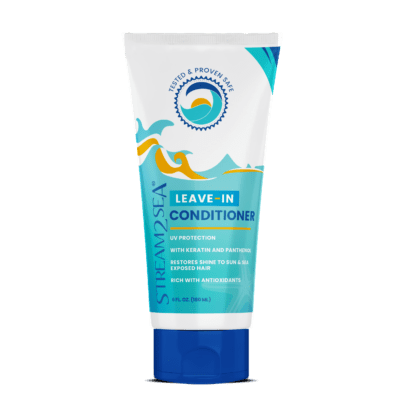Do you choose ‘reef-safe’ products because they are kinder to the planet? I did, and even started Stream2Sea to specifically focus on healthy rivers and oceans. Of course, healthy people are important too, and as a natural products cosmetic chemist, I’d been doing that for years, but the science on sunscreen ingredients harming US wasn’t as clear as what those ingredients are doing to coral reefs and the critters that live on them.
That’s beginning to change with a new report published earlier this summer in the Journal of the American Medical Society.
FDA Regulation
First, a bit of background. When the U.S. Food and Drug Administration began regulating sunscreens in the 1970s, they didn’t evaluate ingredients beyond their efficacy. Nearly 50 years later, when everyone is being told to apply sunscreen daily, the FDA is questioning the safety of some of those ingredients, particularly those that soak into skin. They set a new standard — any ingredient that is absorbed more quickly that 0.5 nanograms per milliliter of blood should be tested to see if it causes cancer, birth defects or other adverse effects.
New Research
The JAMA study looked at four sunscreen ingredients – avobenzone, oxybenzone, octrocrylene and ecamsule. Oxybenzone was the worst offender, but they found that all four surpassed the absorption threshold on the first day and continued to increase over the four-day test.
This doesn’t surprise me even a little bit. Approximately 97% of Americans already have oxybenzone in their blood. It’s detected in urine within 30 minutes of application. These ingredients are easily absorbed by design, even though it’s never been thoroughly tested for human or eco safety.
The next step, which the big manufacturers will no doubt fight, is actual clinical trials on safety. Even before this trial, the FDA had asked for additional tests on 12 of the 18 ingredients currently allowed in sunscreen. Only two – including the titanium dioxide in Stream2Sea – are still officially known as “Generally Recognized As Safe and Effective” (GRASE).
Protect What You Love
If you’re reading this blog, hopefully you’re already using reef-safe Stream2Sea, made with non-nano titanium dioxide (nano vs. non-nano is a critical difference in ocean and human safety) and you have no reason to worry. If you’re not, now may be the time to reconsider your choices for you, your family, and our waters. Yes, it takes a little more effort to properly apply a non-nano mineral sunscreen, but aren’t you – and your planet – worth a few extra minutes?
Take the Safe Sunscreen Pledge!
Take the Safe Sunscreen Pledge and we’ll send you a digital 20-page resource that dives into ingredients to know, ingredients to avoid, what “organic” and “biodegradable” really mean, and what is truly “reef-safe.”
Thank you for being part of a global movement to protect marine and other ecosystems from unsafe ingredients! What we put on our bodies DOES make a difference, and your positive choices help protect the planet!
